Abstract
Electron-nuclear double resonance (ENDOR) signals from matrix protons interacting with the stable free radicals of "A"- and "B"-type melanins have been observed as a function of pH. In all samples the single line is similar in width and unusually narrow. The ENDOR reduction varies by more than a factor of 10, indicating a large sensitivity of relaxation properties of melanin to sample type. Signals were observed over a wide range of experimental conditions with good signal-to-noise ratio, establishing feasibility for further more detailed ENDOR studies. Incubation in D2O resulted in little change, indicating that the free radical is well buried or protected. No resolved hyperfine structure was seen, consistent with the generally accepted view that melanin is a heterogeneous polymer.
Full text
PDF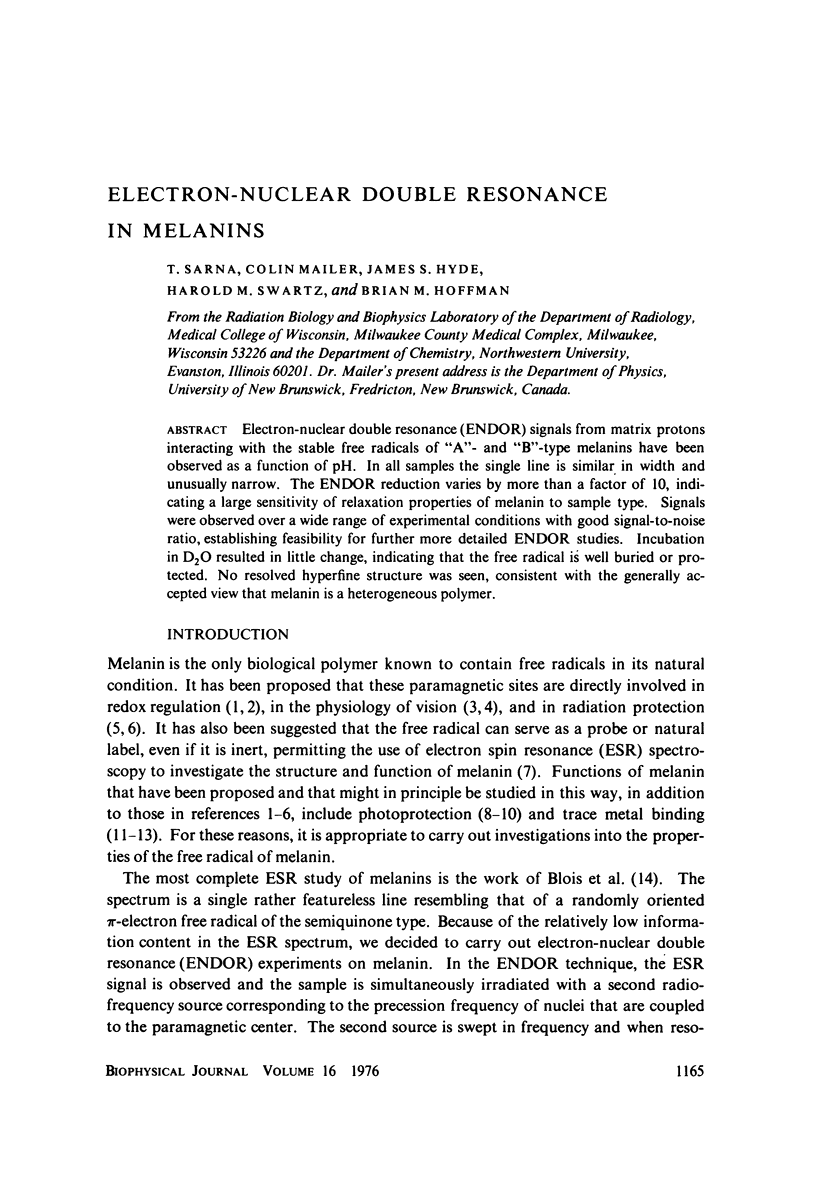
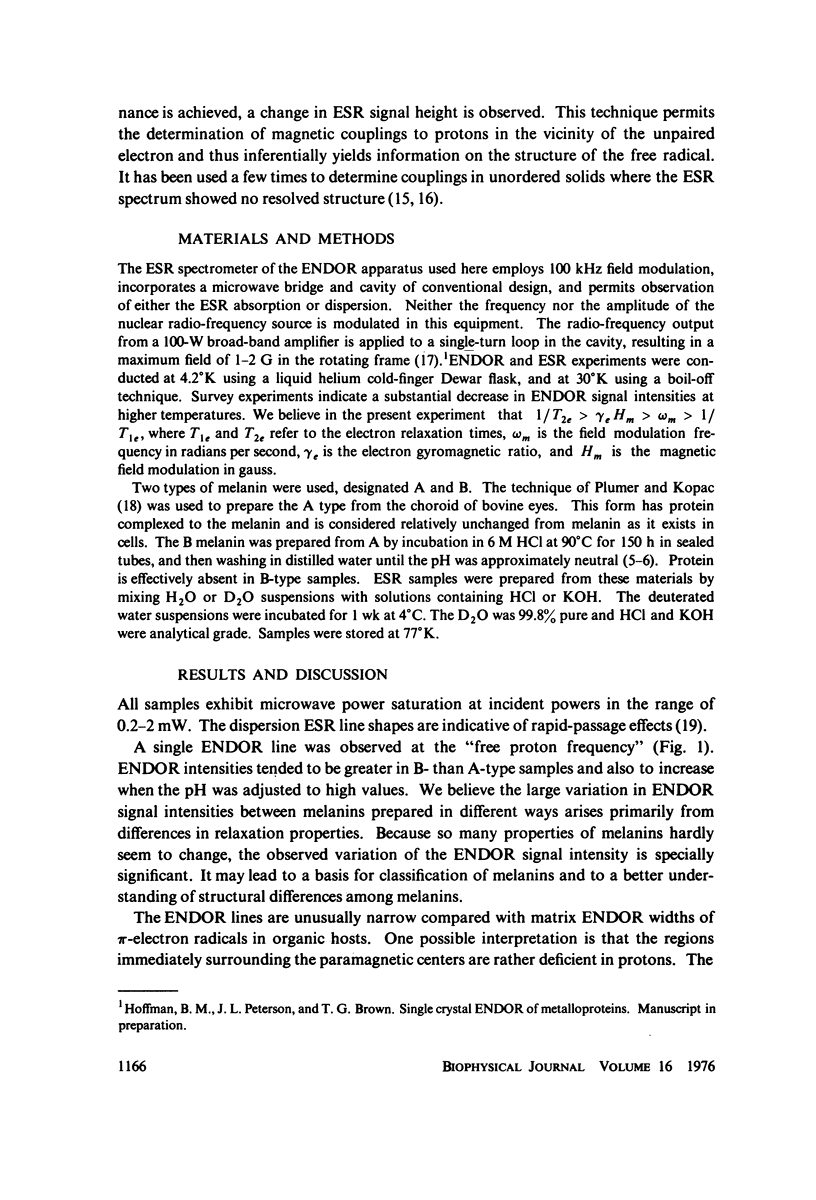
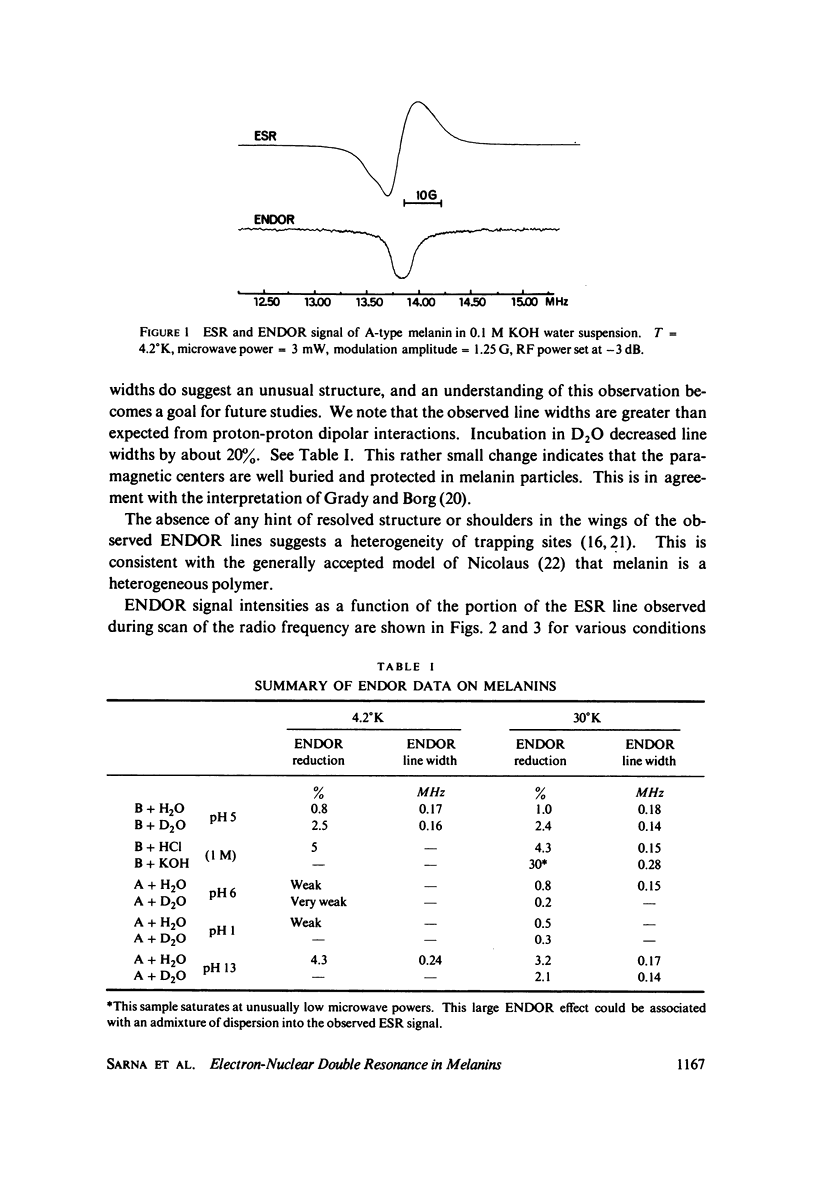
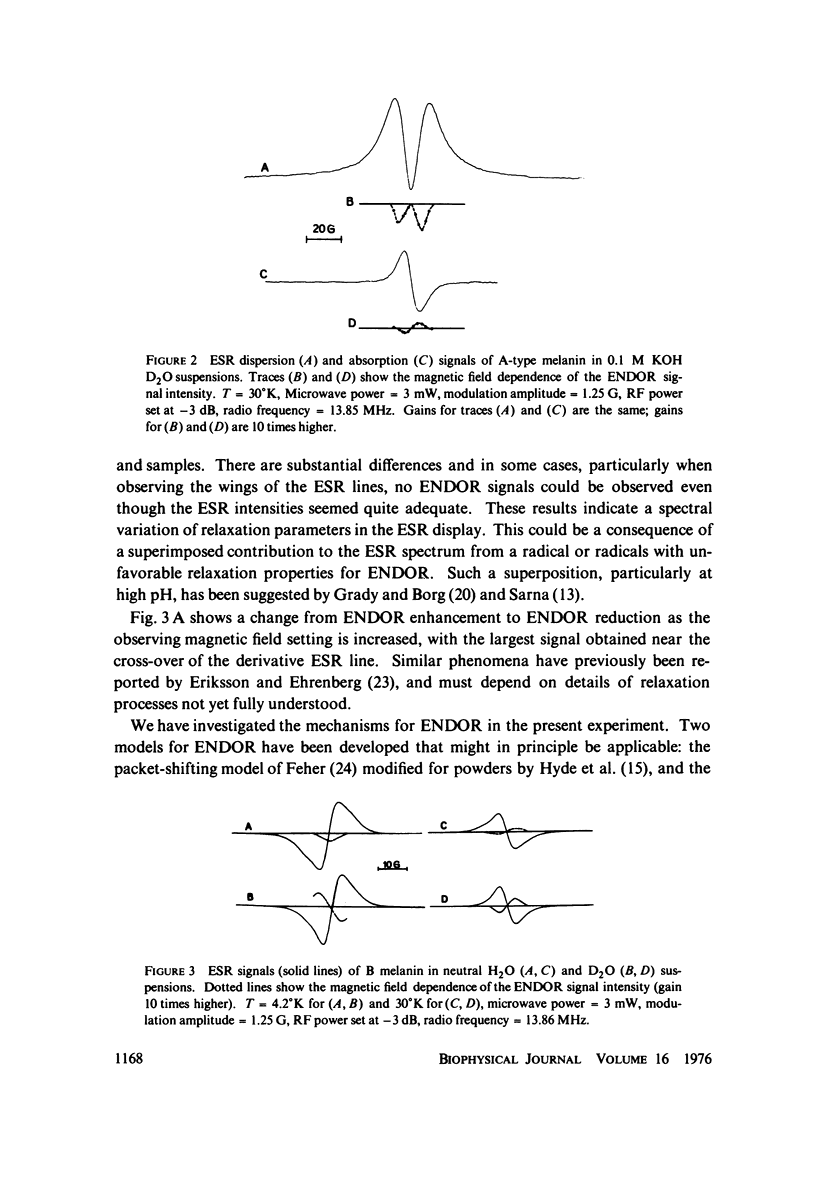
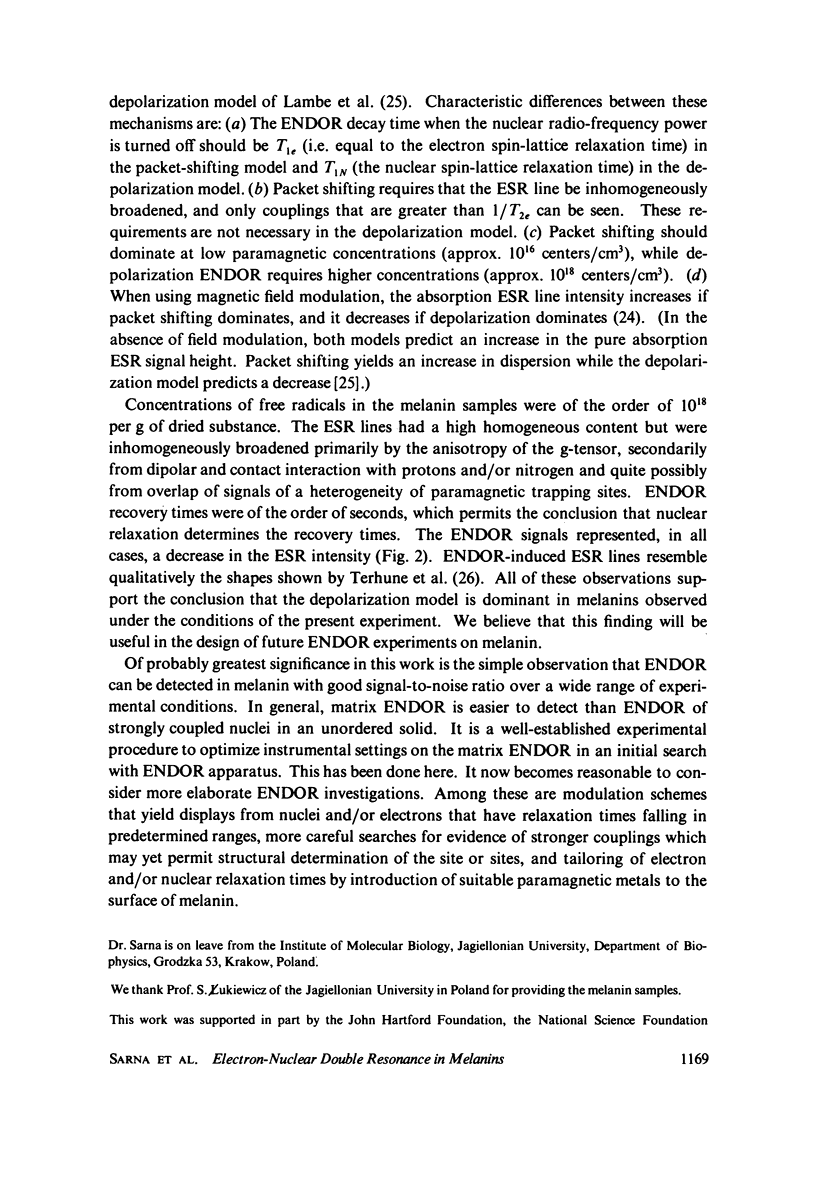
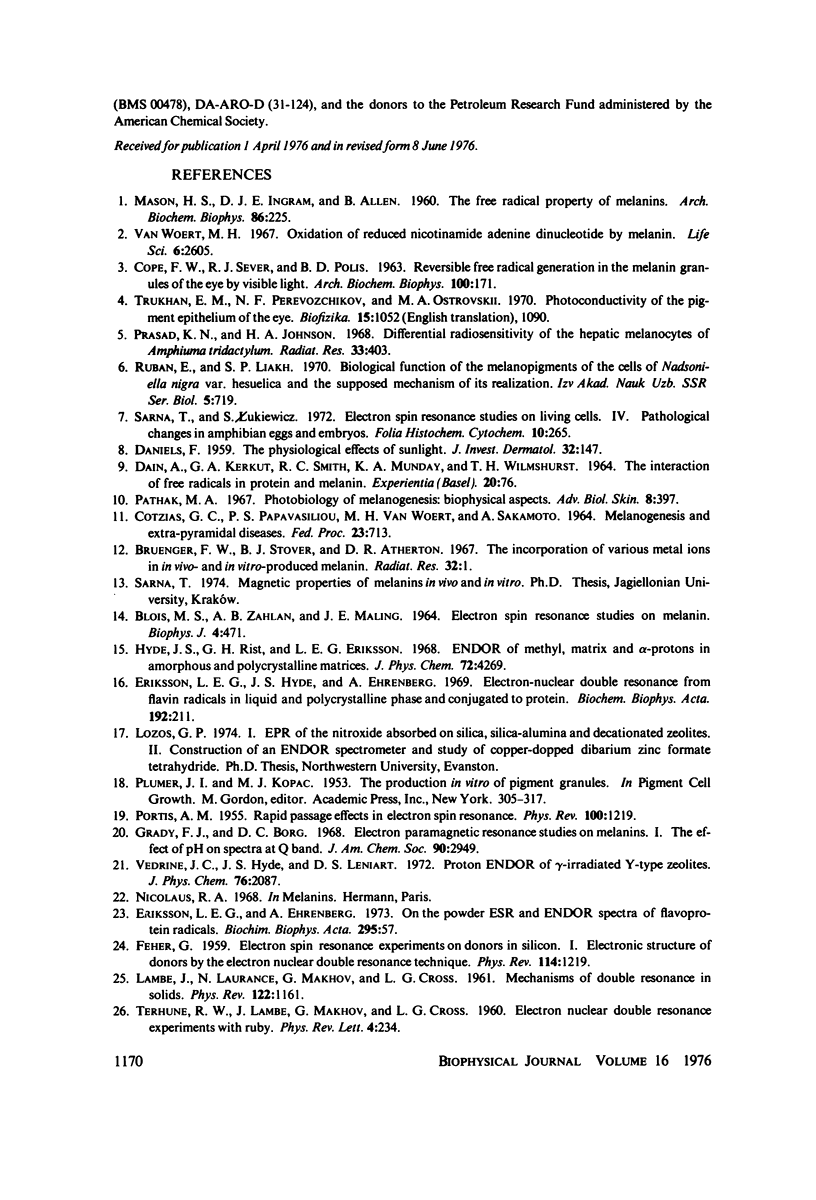
Selected References
These references are in PubMed. This may not be the complete list of references from this article.
- BLOIS M. S., ZAHLAN A. B., MALING J. E. ELECTRON SPIN RESONANCE STUDIES ON MELANIN. Biophys J. 1964 Nov;4:471–490. doi: 10.1016/s0006-3495(64)86797-7. [DOI] [PMC free article] [PubMed] [Google Scholar]
- Bruenger F. W., Stover B. J., Atherton D. R. The incorporation of various metal ions into in vivo- and in vitro-produced melanin. Radiat Res. 1967 Sep;32(1):1–12. [PubMed] [Google Scholar]
- COTZIAS G. C., PAPAVASILIOU P. S., VANWOERT M. H., SAKAMOTO A. MELANOGENESIS AND EXTRAPYRAMIDAL DISEASES. Fed Proc. 1964 May-Jun;23:713–718. [PubMed] [Google Scholar]
- DANIELS F., Jr The physiological effects of sunlight. J Invest Dermatol. 1959 Feb;32(2 Pt 2):147–155. [PubMed] [Google Scholar]
- Eriksson L. E., Hyde J. S., Ehrenberg A. Electron-nuclear double resonance from flavin radicals in liquid and polycrystalline phase and conjugated to protein. Biochim Biophys Acta. 1969 Nov 18;192(2):211–230. doi: 10.1016/0304-4165(69)90358-4. [DOI] [PubMed] [Google Scholar]
- Grady F. J., Borg D. C. Electron paramagnetic resonance studies on melanins. I. The effect of pH on spectra at Q band. J Am Chem Soc. 1968 May 22;90(11):2949–2952. doi: 10.1021/ja01013a036. [DOI] [PubMed] [Google Scholar]
- MASON H. S., INGRAM D. J., ALLEN B. The free radical property of melanins. Arch Biochem Biophys. 1960 Feb;86:225–230. doi: 10.1016/0003-9861(60)90409-4. [DOI] [PubMed] [Google Scholar]
- Prasad K. N., Johnson H. A. Differential radiosensitivity of the hepatic melanocytes of Amphiuma tridactylum. Radiat Res. 1968 Feb;33(2):403–416. [PubMed] [Google Scholar]
- Ruban E. L., Liakh S. P. Biologicheskaia funktsiia melanopigmenta kletok Nadsoniella nigra var. Hesuelica i predpolagaemye mekhanizmy ee obespecheniia. Izv Akad Nauk SSSR Biol. 1970 Sep-Oct;5:719–724. [PubMed] [Google Scholar]
- Sarna T., Lukiewicz S. Electron spin resonance studies on living cells. IV. Pathological changes in amphibian eggs and embryos. Folia Histochem Cytochem (Krakow) 1972;10(3):265–278. [PubMed] [Google Scholar]
- Trukhan E. M., Perevozchikov N. F., Ostrovskii M. A. Fotoprovodimost' pigmentnogo épiteliia glaza. Biofizika. 1970 Nov-Dec;15(6):1052–1055. [PubMed] [Google Scholar]
- Van Woert M. H. Oxidation of reduced nicotinamide adenine dinucleotide by melanin. Life Sci. 1967 Dec 15;6(24):2605–2612. doi: 10.1016/0024-3205(67)90110-5. [DOI] [PubMed] [Google Scholar]


